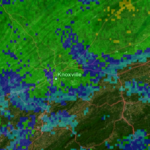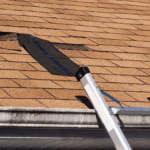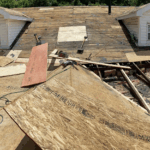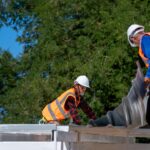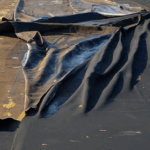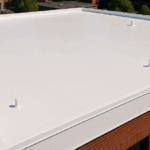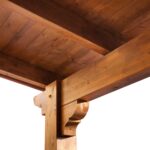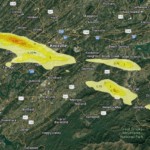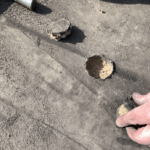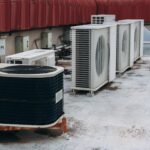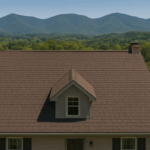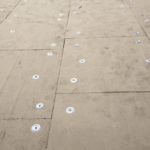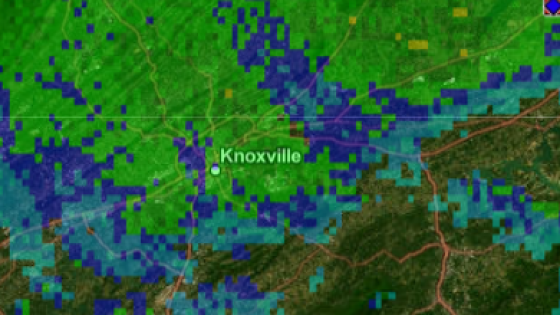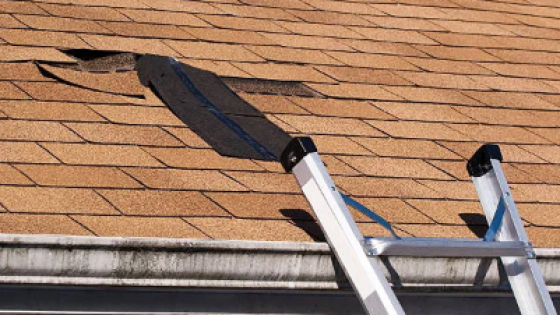Commercial roofs are built to withstand intense weather conditions and daily wear. But roof penetrations—areas where pipes, vents, HVAC units, skylights, and cables breach the roof surface—pose a major vulnerability. If improperly sealed, these penetrations can lead to leaks, energy inefficiency, mold growth, and costly structural damage.
According to the National Roofing Contractors Association (NRCA), over 70% of commercial roof leaks originate from penetration points. For property managers, facility owners, and business owners in Knoxville and nationwide, understanding how to seal commercial roof penetrations can save thousands in repairs and extend the lifespan of the roofing system.
At Litespeed Construction, we’re a Knoxville roofing company with years of commercial roof experience. This guide shares our expertise on best practices, tools, sealants, and steps needed to properly seal commercial roof penetrations.
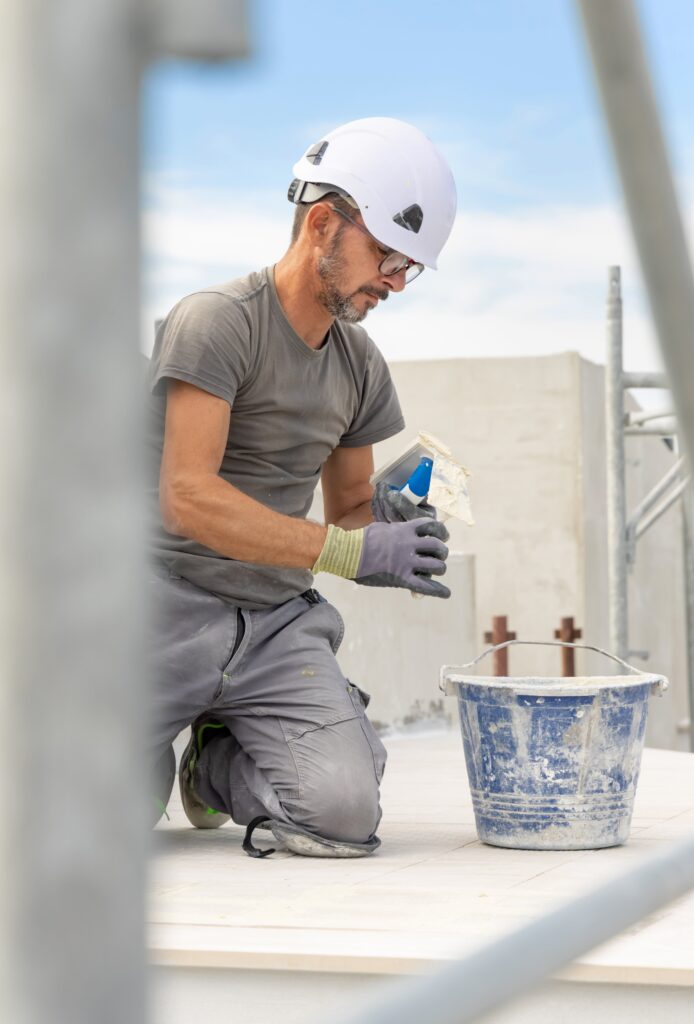
Key Takeaways
💡Over 70% of commercial roof leaks stem from unsealed or failing roof penetrations.
💡Routine maintenance and proper sealing can extend roof life by 10+ years.
💡Choosing the right sealant and flashing materials is critical for leak prevention.
💡Working with certified professionals ensures compliance with OSHA and NRCA standards.
Understanding Roof Penetrations in Commercial Buildings
Common Types of Roof Penetrations
| Roof Penetration Type | Function | Risk of Leak |
|---|---|---|
| HVAC units & ducts | Heating, ventilation, and cooling systems | High |
| Plumbing vent stacks | Allows air into plumbing system | Medium |
| Electrical conduit & cables | Power and networking to rooftop equipment | High |
| Skylights | Natural lighting | Medium |
| Roof drains | Water drainage from flat roof | High |
| Exhaust vents | Removes air/gas from building | Medium |
These components require a waterproof seal at the point of entry to prevent leaks and water damage to internal structures.
Why Roof Penetrations Fail
There are several reasons commercial roof penetrations begin to fail:
- Aging sealants: Sealants degrade due to UV exposure, temperature swings, and moisture.
- Improper flashing installation: Flashing should redirect water away from penetrations, but poor installation can do the opposite.
- Thermal expansion: Seasonal temperature changes cause roof materials to expand and contract, weakening seals.
- Foot traffic: HVAC servicing or maintenance teams may damage seals while walking on the roof.
Materials Needed to Seal Commercial Roof Penetrations
| Material Type | Recommended Product | Purpose |
|---|---|---|
| Roof Sealant | GacoPatch, Mule-Hide Silicone Sealant | Creates a watertight barrier |
| Flashing | TPO/PVC-compatible prefabricated boots | Surrounds and protects penetration |
| Primer | Henry® Roof Primer | Improves adhesion of sealants |
| Reinforcing Fabric | Polyester mesh fabric | Strengthens seal over cracks |
| Caulking Gun | Milwaukee M12 Cordless Caulking Gun | For applying sealant evenly |
| Cleaning Supplies | Roof-safe cleaner, rags | Preps the surface |
Note: Always consult your roof manufacturer’s warranty before applying products.
Step-by-Step: How to Seal Commercial Roof Penetrations
Step 1: Inspect All Penetration Points
Use a checklist to assess all vent stacks, HVAC bases, drains, and cable entries. Look for:
- Cracked sealant
- Rusted metal flashing
- Pooling water around base
📌 Tip: Use a drone or infrared moisture scanner for non-invasive inspection.
Step 2: Clean the Area
Dirt, grease, and debris reduce sealant adhesion. Use a manufacturer-approved roof cleaner and wire brush.
Step 3: Apply Primer (If Required)
Some surfaces (like TPO) need a primer to ensure proper adhesion of the sealant or flashing.
Step 4: Install or Repair Flashing
Use prefabricated boots for vent stacks or pipes. Ensure flashing is embedded in roofing membrane as per NRCA guidelines.
Step 5: Apply Sealant Generously
Using a caulking gun or trowel, apply roof sealant to all sides of the penetration. Smooth with a tool or gloved hand for even coverage.
Step 6: Reinforce with Fabric (For Cracks or Gaps)
Lay polyester fabric into wet sealant and apply another layer of sealant over it.
Step 7: Let Cure and Re-inspect
Cure time varies (4–24 hours). Re-inspect the seal, especially after heavy rain.
Pros and Cons of Sealing Roof Penetrations Yourself
| Pros | Cons |
|---|---|
| Cost savings if done correctly | Risk of improper sealing causing more damage |
| Can be completed with basic tools | OSHA violations possible without proper safety gear |
| Suitable for small, accessible penetrations | No warranty backing DIY repairs |
| Good for seasonal maintenance checks | Professional inspections catch hidden issues |
Government & Industry References
- National Roofing Contractors Association (NRCA)
www.nrca.net
Provides installation guidelines, certifications, and technical manuals. - Occupational Safety and Health Administration (OSHA)
www.osha.gov
Outlines fall protection and roofing safety standards for commercial work. - Energy.gov – Building Envelope Technologies
www.energy.gov/eere/buildings/building-envelope-technologies
Research on insulation and roofing components.
FAQs about Sealing Roof Penetrations
A roof penetration is any object that passes through the roofing membrane—like pipes, vents, or HVAC units.
Improper sealing, material degradation, or physical damage from weather and foot traffic are common causes.
At least twice per year, plus after severe weather events.
Only if it's a commercial-grade sealant. Household caulks are not durable enough for commercial use.
Silicone-based sealants like GacoPatch offer excellent performance in flat roof applications.
Some do, but only if maintenance is regularly documented and done to spec.
Yes, but be cautious—professional inspections are still recommended to ensure watertightness.
Flashing is a thin material that redirects water away from penetrations. Yes, it's essential.
It can cause interior water damage, mold growth, and even roof structure failure.
Prices range from $250 to $2,500, depending on roof size and complexity.
Trust Litespeed Construction for Commercial Roof Sealing in Knoxville
When it comes to safeguarding your commercial investment, sealing roof penetrations isn’t just maintenance—it’s critical protection against costly repairs and business disruption. Litespeed Construction offers expert inspections, sealing, and full roof system maintenance throughout Knoxville, TN and surrounding areas.
As experienced and licensed roofing contractors, our team guarantees high-performance sealants and code-compliant installation that ensures peace of mind. Contact us today to schedule a free roof assessment.

